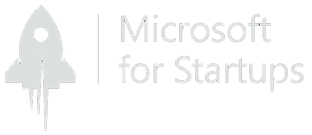Dataset generation
Data is an important foundation for any successful ML project but having enough data, in enough quantities and sufficient quality is a challenge. Luckily, we’ve got you covered.
Learn More
What are their benefits?
How can you use real and synthetic Datasets?
Improved model accuracy
High-quality datasets can improve the accuracy of machine learning models by providing them with sufficient and diverse training data.
Better generalization
Datasets that are diverse and representative of the problem space can help ML models generalize better to unseen data, making them more useful in real-world scenarios.
Reduced bias
Creating datasets that are representative of the population can help reduce bias in machine learning models, resulting in more fair and equitable decisions.
More efficient training
By generating high-quality datasets, machine learning models can be trained more efficiently, reducing the time and resources required to produce effective models.
Adaptability
A well-constructed dataset can be adapted to work with a variety of machine learning models, allowing them to be reused in future projects and applications.
Better decision-making
Accurate and representative datasets can lead to more informed and data-driven decision-making in a range of fields, from healthcare to finance and beyond.
Expertise
Image and video processing
In computer vision, datasets are used to train machine learning models for tasks such as object recognition, facial recognition, and image classification. For example, ImageNet is a widely used dataset of images that has been instrumental in advancing the field of computer vision.
Natural language processing
Datasets are also used in natural language processing to train models for tasks such as language translation, sentiment analysis, and text classification. Examples of such datasets include the Stanford Sentiment Treebank and the SNLI Corpus.
Applications
Technology
Enterprises operating in fields such as artificial intelligence, machine learning, data analytics, and software development play a pivotal role in both utilizing and generating extensive datasets.
Healthcare
Organizations involved in diverse applications within the healthcare domain, such as clinical research, drug discovery, and patient monitoring, actively generate and utilize datasets.
Education
In the realm of education, datasets are extensively employed for various critical functions, such as student assessment, curriculum development, and educational research.
Marketing
The marketing and advertising industry relies on datasets to inform targeted advertising campaigns, customer segmentation, and market research.
Retail
Leveraging dataset generation can empower retailers to optimize inventory management, personalize customer experiences, and enhance operational efficiency in their business operations.
Considerations when deciding between the types of datasets
Real world data and synthetic data
Real world data refers to information collected from actual events, experiences, and observations in the physical world. One of the key advantages of real world data is its authenticity and accuracy, as it reflects the true nature of the phenomena being studied. Synthetic data, on the other hand, has the ability to provide large amounts of data quickly and efficiently, which can be useful in situations where real world data is scarce or difficult to obtain.
Data availability and quality
Data availability and quality can vary significantly between real-world data and synthetic data. Real-world data is typically collected from actual events, transactions, or observations in the real world. As a result, real-world data can provide valuable insights into actual behavior, preferences, and patterns. On the other hand, synthetic data can provide benefits such as increased privacy protection and a larger volume of data, as it can be generated on demand.
Speed
The speed of processing and analysis of real-world data versus synthetic data can depend on the the size and complexity of the data, the computational resources available, and the type of analysis being performed. In general, synthetic data can be generated much faster than real-world data, as it can be created using computer algorithms and models without the need for physical collection. However, the quality and accuracy of synthetic data may not always be comparable to that of real-world data, especially when it comes to capturing the full complexity and variability of the real world.
Diversity
Diversity in data refers to the degree to which the data represent the full range of variability that exists in the real world. Real-world data is generally considered more diverse than synthetic data, as it is drawn from a wide range of sources and reflects the complex and varied nature of the world around us. Synthetic data, on the other hand, is generated using algorithms and models, and may not fully capture the complexity and diversity of real-world data.
Cost
The cost of collecting and processing real-world data can vary widely depending on the type and quantity of data needed, as well as the methods used for collection and analysis. For example, collecting data through surveys or experiments may be more costly and time-consuming than collecting data passively through digital devices or sensors. In contrast, synthetic data can be generated at a much lower cost than real-world data, as it does not require physical collection or processing. However, there may still be costs associated with developing and testing the algorithms and models used to generate synthetic data.
We make deploying machine learning technology more approachable, scalable, and affordable.
Get in touch with one of our specialists.
Let's discover how we can help you
Training, developing and delivering machine learning models into production
Contact us
Got a project?
Let's talk
About us
Industries
Expertise
Services















